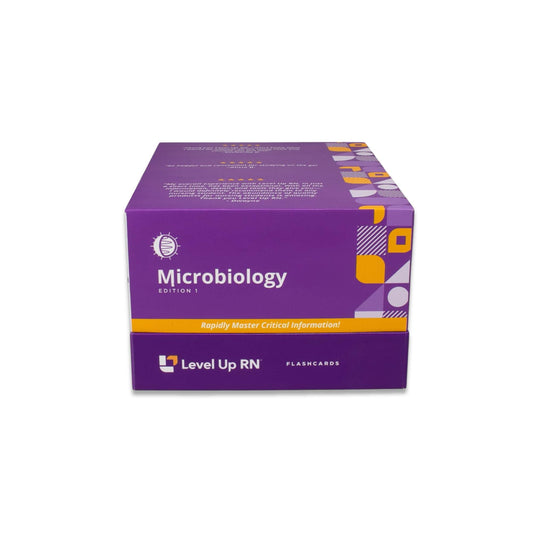Microbiology, part 44: Acellular Infectious Agents - Lytic & Lysogenic Cycle
Viral replication, specifically the lytic cycle and lysogenic cycle of bacteriophages. The key steps involved in each cycle, and important terms like prophage, lysogeny, and induction.
Quiz Questions
A phage takes over the host cell's machinery to make viral components during which stage of the lytic cycle?
A phage takes over the host cell's machinery to make viral components during which stage of the lytic cycle?
During the lysogenic cycle, the phage DNA inserts itself into the host chromosome, becoming a what?
During the lysogenic cycle, the phage DNA inserts itself into the host chromosome, becoming a what?
Which process triggered by an environmental stressor causes the prophage to be removed from the bacterial chromosome and enter the lytic cycle?
Which process triggered by an environmental stressor causes the prophage to be removed from the bacterial chromosome and enter the lytic cycle?
Full Transcript: Microbiology, part 44: Acellular Infectious Agents - Lytic & Lysogenic Cycle
Full Transcript: Microbiology, part 44: Acellular Infectious Agents - Lytic & Lysogenic Cycle
Hi, I'm Cathy with Level Up RN. In this video, I will be discussing viral replication, specifically the lytic cycle and lysogenic cycle of bacteriophages. At the end of the video, I'm going to give you guys a little quiz to test your understanding of some of the key facts I'll be covering, so be sure to stay for that. And if you have our Level Up RN microbiology flashcards, go ahead and pull out your flashcards on the lytic cycle and lysogenic cycle so you can follow along with me, and pay close attention to the bold red text on the back of the cards because those are the things that you are likely to get tested on.
Let's first talk about the lytic cycle. This is a method of viral replication where a bacteriophage, which is a virus that infects bacteria, takes over a bacterial cell, replicates, and then destroys the cell. Let's take a look at the steps involved in this cycle using an image from our microbiology flashcard deck. First, during attachment, the virus attaches to the host surface. Then, during penetration, the viral genome, either DNA or RNA, is injected into the host cell. However, the capsid and other structures of the bacteriophage remain outside the cell.
Next, during biosynthesis, the phage takes over the host cell's machinery to make all the building blocks necessary to assemble new viral particles inside the host cell. This includes making new copies of the viral genome and synthesizing viral proteins. Then, during maturation, these components are assembled together into new viral particles. And then finally, during release, the host cell lyses, or bursts open, which releases these viral particles. And now these newly released virions are ready to infect new host cells. Of note, lysis does kill the host cell.
Next, we're going to talk about the lysogenic cycle. With this method of replication, the bacteriophage's DNA becomes integrated into the host cell's chromosome through a process called lysogeny. This allows the virus to replicate without killing the host cell. Let's take a look at the steps involved in the lysogenic cycle. During attachment, the virus attaches to the host surface. Then, during penetration, the viral genome is injected into the host cell. And as you may notice, these first two steps are the same as the lytic cycle. However, during the third step, which is called integration, the phage's DNA inserts itself into the host cell's chromosome. And that integrated genome in the bacterial DNA is called a prophage. And bacteria that contain a prophage are called lysogens.
So now, when the cell divides, the phage DNA is replicated with the bacterial DNA. And this combined DNA is passed on to the new daughter cells. This process continues as long as environmental conditions are good. However, if an environmental stressor occurs, such as a lack of nutrients or exposure to chemicals, then the prophage is excised, or removed, from the chromosome and the lytic cycle is initiated. So here, you can see during induction, the phage DNA has been removed from the bacterial chromosome due to some kind of environmental stressor. The remaining steps are the same steps we went over earlier with the lytic cycle. So during biosynthesis, the phage takes over the host cell's machinery to make viral components. During maturation, those components are then assembled. And then during release, the viral particles are released, causing cell lysis.
One last thing I wanted to note is that virulent phages only undergo the lytic cycle. So this type of phage is going to enter the cell, take over the cell's machinery to replicate, and then cause cell death, whereas a temperate phage can undergo the lysogenic cycle or the lytic cycle. So this type of phage can replicate without causing cell death via the lysogenic cycle, or it can switch over to the lytic cycle if an environmental stressor occurs.
All right. It's quiz time, and I have three questions for you.
Question number one, a phage takes over the host cell's machinery to make viral components during which stage of the lytic cycle?
The answer is...biosynthesis.
Number two. During the lysogenic cycle, the phage DNA inserts itself into the host chromosome, becoming a blank.
The answer is...prophage.
And number three, which process triggered by an environmental stressor causes the prophage to be removed from the bacterial chromosome and enter the lytic cycle?
The answer is...induction.
All right, that's it for this video. I hope it was helpful.
[BLOOPERS]
With this method of viral.


